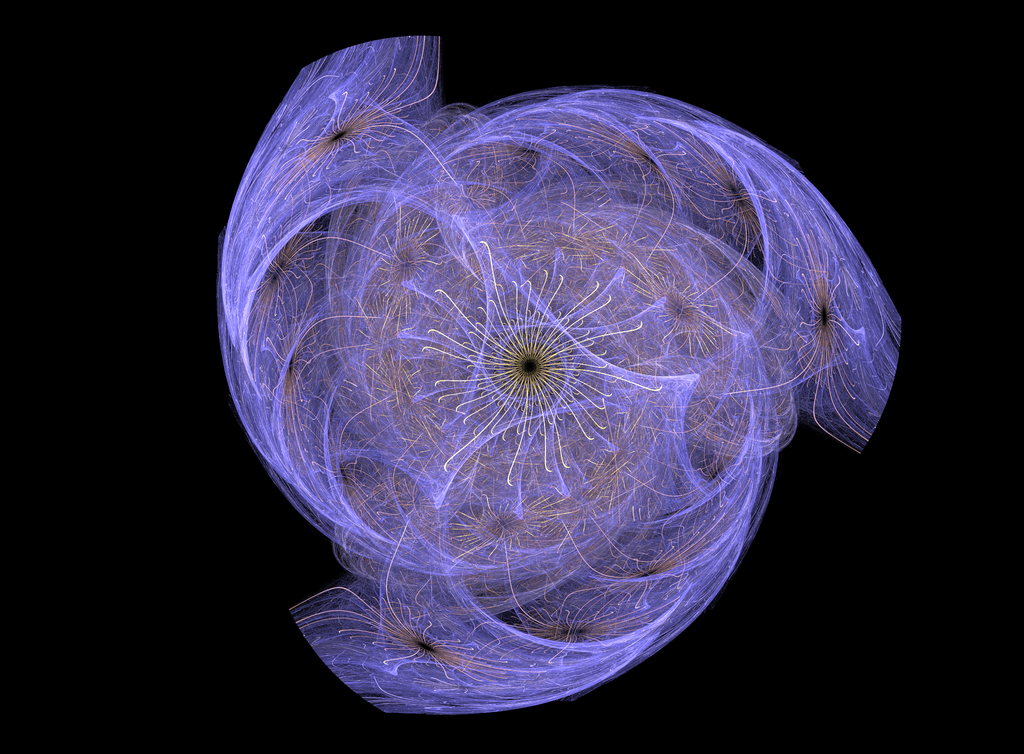I became both Immortalist and Transhumanist long before I knew such designations existed. In 2006, at age 14, I conceived of both the extreme desirability and technical feasibility of ending death, without any knowledge of the proposals for immortality already extant. I thought I was the only one in the world who saw both the utter, belligerent waste of death, and our ability to technologically defeat it. I was dumbfounded that humanity wasn’t attacking the problem like any other preventable source of widespread suffering. I saw that the end of death was not only desirable but a moral imperative.
If we have the power to make it happen, or have even a chance at doing so, yet fail to even try for reasons of inertia, incredulity, or indifference, then we are condemning massive amounts of real people to unnecessary death by our inaction. I felt a moral obligation to work on conceptual development of the various pragmatic aspects required to physically realize indefinite longevity until I was old enough to physically put these developments into practice – i.e., do experiments and design physical systems. I worked on my grand project, as I thought of it, from August 2006 until May 2010, at which time I discovered multiple other approaches to indefinite longevity being actively developed (initially through Kurzweil’s The Singularity is Near), and even multiple antecedents of my own approach, I felt less of an imperative to continue active conceptual development on these procedures. I was happy to find the existing Immortalist movement, of course; I stopped not out of resentment for having been anteceded, but rather out of newfound assurance that the defeat of death didn’t lay solely in my hands.
I had worked for 4 years on conceptual designs and approaches to indefinite life extension – designs that I was planning on building and experimentally verifying in my young adulthood, whether through normative medical research and academia or through a privately funded venture, thinking that I would have more of a success than if I came to the world as a teenager with these ideas, as they were. By 2010, 4 years into the project, I discovered that others were seeking the defeat of death through technological intervention as well, and that many of the specific ideas I had come up with were already out and in the world.
My original approach involved transplanting the organic brain into a full cybernetic body. Over the next few months I collected research on experiments in organic brain transplantation done with salamanders, dogs, and monkeys , on maintaining the brain’s homeostatic and regulatory mechanisms outside the body and on a host of prosthetic and robotic technologies which I saw as developmentally converging to allow the creation of a fully cybernetic body. I soon realized that this approach was problematic; while the brain typically dies as a consequence of its homeostatic and regulatory mechanisms (i.e. heart and lungs failing), it would still fall prey to cell death if it remained organic, even if such regulatory mechanisms were maintained technologically.
This obstacle led to my conceiving the essential gestalt of uploading – the gradual replacement of neurons with functional equivalents that preserve each original neuron’s relative location and connection – three months later. Although my original approach was prosthetic (i.e., physically embodied functional equivalents of neurons), I eventually saw computational models as being preferable for their comparatively higher speed and ease of modification and/or modulation.
I discovered that Brain-Emulation and Connectomics (or Mind-Uploading more informally) was an existing discipline not long after conceiving of the idea, but at the time thought that various aspects required for gradual replacement (and thus for real immortality, and not the creation of an immortal double, were undeveloped in regard to how the computational models would communicate and maintain functional equilibrium with the existing biological neurons. If we seek to replace biological neurons with artificial equivalents, once we have a simulation of a given neuron in a computer outside the body, how is that simulated neuron to communicate with the biological neurons still inside that biological body, and vice versa? My solution was the use of initially MEMS (micro-electro-mechanical systems) but later NEMS (nano-electro-mechanical-systems) to detect biophysical properties via sensors and translate them into computational inputs, and likewise to translate computational output into biophysical properties via electrical actuators and the programmed release of chemical stores (essentially stored quantities of indexed chemicals to be released upon command). While the computational hardware could hypothetically be located outside the body, communicating wirelessly to corresponding in-vivo sensors and actuators, I saw the replacement of neurons with enclosed in-vivo computational hardware in direct operative connection with its corresponding sensors and actuators as preferable. I didn’t realize until 2010 that this approach—the use of NEMS to computationally model the neurons, to integrate (i.e., construct and place) the artificial neurons and translate to biophysical signals into computational signals and vice versa—was already suggested by Kurzweil and conceptually developed more formally by Robert Freitas, and when I did, I felt that I didn’t really have much to present that hadn’t already been conceived and developed.
However, since then I’ve come to realize some significant distinctions between my approach and Brain-Emulation, and that besides being an interesting story that helps validate the naturality of Immortalism’s premises (that indefinite longevity is a physically realizable state, and thus technologically realizable – and what can be considered the “strong Immortalist” claim: that providing people the choice of indefinite longevity if it were realizable is a moral imperative), I had several novel notions and conceptions which might prove useful to the larger community working and thinking on these topics.
While this project began as a means of indefinite longevity, it took on Transhumanist concerns within days of its conception. A cybernetic body not only frees one from the strictures of death, but also from the limitations of a static body designed for a static environment. Freed from our flesh, we could comfortably bear any extremes of Earth or beyond; interchange our bodily designs with the nonchalance of attire; and continuously, on a daily basis, take charge of what it means for us to be. I envisioned extreme phenotypic diversity as undermining racism and prejudices, an explosion of intelligence and happiness consequent of finally taking the stuff of our being into our own hands, the newfound availability of heretofore unrealized modalities of being, experience, thought, morality, and abilities realized through the technological extension and enhancement of the mind.
By 2007, I was calling this philosophy “Enhancism”, which I designated as the thesis that enhancement is the principal underlying both human nature and evolutionary nature. Regardless of what constitutes an “enhancement”, the fact that we strive to reach idealized objectives and grow toward what we envision as better versions of our selves and our world exemplifies enhancement as the underlying driver and primal force that makes up Mind, Man, and Humanity. The objective or “optimization target” isn’t important – what is important is the act of designating an objective as better, and then striving in a fit of fiery thrusts toward it.
I never saw this imperative of improving ourselves using all available means as a move away from humanity, but rather as a natural extension and continuation of what has always best designated us as human. I realized that self-directed modification of both body and mind were not only both possible and desirable, but a natural extension of what humanity has been doing since long before the very concept of “humanity” existed. I had arrived at the essential premises and conclusions of both Immortalism and Transhumanism without exposure to existing forms of either. Indeed, this was even before I started reading science fiction!
I think this observation undermines what I feel to be a common misconception of outside of Transhumanist circles – that Transhumanism and Immortalism are fringe movements for statistical outliers with idiosyncratic interests. I think that this rather adds credence to rebuttal that Transhumanism and Immortalism exemplify the modern embodiment of all we’ve ever been; that they are not founded upon grandiose and overly contingent axioms, but rather on the respective premises that life is good and so should be extended for as long as possible and that we are more likely to create a better world and better selves than we are to find them already given.
If the underlying logic behind Immortalism and Transhumanism can be independently arrived at by a 14-year-old without any knowledge of historical or extant forms of either, then how removed from the human concerns of the majority can they really be? If they relied on a host of contingent hopes and deviant memetic baggage – if their claims or conclusions were overly complicated in any way – how could they be arrived at so readily and fluidly by an adolescent?
I also unwittingly recapitulated many specific Transhumanist objectives throughout the course of my “grand project”, as I had thought of it at the time. My approach of gradually replacing the neurons in the brain with functional equivalents would necessitate control over the processes exhibited by the replacements. This would allow us to actively and consciously control the variables and metrics determining neuronal behavior, not only modifying ourselves through the integration of additional NRUs (neuron-replication-units) or NRU-networks, but also through active modification and real-time modulation of the NRUs that would by then underlie our existing mental and experiential modalities, having replaced our existing biological neurons.
Within the first year of the project, I had conceived of using these new capabilities to make ourselves smarter (an unwitting recapitulation of intelligence-amplification), of making ourselves more ethical (an unwitting recapitulation of moral engineering, explored by such thinkers as James Hughes, Julian Savulescu and Asher Seidel, among others), and of actively making ourselves happier, or rather of eliminating those normative biological aspects that bias us needlessly towards unhappiness (an unwitting variant of David Pearce’s hedonistic imperative), and the exchange of real-time perception and memory deeper and of higher fidelity than sensory memories, essentially extending to thoughts, emotions, and indeed all experiential modalities available to us.
One could imagine my surprise upon finding Transhumanism and Immortalism as existing disciplines and movements; I felt as though I had borne a son and gone away for a day only to return and find him grown up – and that I was never his biological father to begin with.
The fact that both Transhumanist (i.e., enhancement, self-modification and self-modulation) and Immortalist concerns and conceptions developed concurrently throughout my work also reifies their having a shared gestalt. While they are not mutually inclusive (you can be one without being the other), they do share some strong similarities. They both eschew biological and naturalistic limitations, exalt autonomy and the provision of rights, and spring from a legitimate glorification of life and self.
The last point I would like to make here is one that I think helps subvert the superficial claim that Transhumanist or Immortalist objectives are essentially selfish concerns. At 14 I had no personal stake in trying to end death as fast as possible; both ending death and increasing our ability to better determine who we are and what we can do were from day one for the world and for broader humanity – particularly for those who didn’t have the majority of the rest of their lives to live: the 100,000 people who succumb to bitter finitude each day. I think most other Transhumanist and Immortalist thinkers would agree that any positive future involves broad access to both longevity treatments and to the latest means of improving and realizing ourselves.
None of these naïve misinterpretations are real concerns to Transhumanist and Immortalist communities, except in regards to the degree with which they prevent people from digging deep enough to discover their stark insubstantiality. While they may be so off-base as to make their fallaciousness readily obvious to members of either community, and thus a seeming non-issue, I think the way in which they engender public misconceptions about Transhumanism and Immortalism validates our need to dispel them. Transhumanism is the only humanism; it exemplifies the very heart of what makes us human. The “trans” and the “human” in Transhumanism can only signify each other, for to be human is to strive to become more than human. I’ve thought this from the beginning, and this is a direction that my thinking – while having developed significantly since the practical work described here – is still oriented toward.
I wonder how many others there are out there like me, yet to approach the world with their vast extrapersonal visions of self-directed self-realization, yet to find the daring to throw their raucous good works in the face of this world that deserves better than to simply die quietly and unquestioningly, without revolt; others who, like me, saw that to try and change the world for the better is the very namesake of Man; who’ve crafted star-spangled dreams as large and as belligerently righteous as ending death and taking definite control of our ever-indefinite and indefinitive selves.
To every riled child who has ever had a vision larger than himself but that he has been too afraid to reveal, who has ever dreamt of bounding past the boundaries of present and toward the real prize, who has ever felt a dire need to make Man more than he is: I call thee out of the whorlworks and into the world! Come, show us what you’ve done!
What follows in my subsequent essays is first a broad overview of my work in this area from 2006 to 2010 (at which time I had discovered enough Immortalist antecedents to stop actively working on conceptual varieties of techno-immortality), first in terms of my methodology for achieving indefinite longevity (i.e., my work in uploading or brain-emulation proper), and then in terms of the enhancement and modification side, focusing on similarities and differences between my vision and those developed in Transhumanism and Immortalism.
While this essay is largely personal and introductory, I think the fact of my independently arriving at many of the conceptual premises and conclusions of Transhumanism and Immortalism, and under different terms, also reifies the more substantial claim that Transhumanism isn’t as far-out as is normatively presumed—or perhaps rather that the “human” isn’t as right-here as is commonly supposed. For that curious creature of clamorous self-determination called Man is most familiar with unfamiliarity, and most at home in alien dendritic jungles, for having gone so far out as to come back around again.
While in 2010 I thought most of my ideas in regards to practical approaches to immortality as already conceived, I now see some differences between my approach and other conceptions of brain-emulation. One is the conceptual development of physical/prosthetic approaches to neuron replication and replacement (i.e., prosthetics on the cellular scale) in addition to strictly computational approaches. Another is several novel approaches to preserving both immediate subjective-continuity (that is, the ability to have subjective experience, sometimes called sentience – as opposed to sapience, which denotes our higher cognitive capacities like abstract thinking, thus humans have sentience and sapience while most non-mammals are thought to lack sapience but possess sentience) and temporal subjective-continuity (the property of feeling like the same subjective person as you did yesterday, or a week ago, or 10 years ago – despite the fact that all of the molecules constituting your brain are gone, having been replaced with identical molecules through metabolism – via molecular turnover rather than full-cell replacement – over the course of a seven-year period) through a gradual (neuron) replacement procedure that are to my knowledge yet to be explored by the wider techno-immortalist community and brain-emulation discipline, respectively.
Franco Cortese is an editor for Transhumanity.net, as well as one of its most frequent contributors. He has also published articles and essays on Immortal Life and The Rational Argumentator. He contributed 4 essays and 7 debate responses to the digital anthology Human Destiny is to Eliminate Death: Essays, Rants and Arguments About Immortality.
Franco is an Advisor for Lifeboat Foundation (on its Futurists Board and its Life Extension Board) and contributes regularly to its blog.
Bibliography
(June 2012). International Journal of Machine Consciousness, 4 (1).
Browne, M. W. (2011). From science fiction to science: ‘the whole body transplant’. Retrieved February 28, 2013 from http://www.nytimes.com/1998/05/05/science/essay-from-science-fiction-to-science-the-whole-body-transplant.html
Demikhov, V. P. & (1962).Experimental transplantation of vital organs. Basil Haigh, transl. New York: Consultant’s Bureau Enterprises, Inc.
Grabianowski (2007). How Brain-computer Interfaces Work. Retrieved February 28, 2013 from http://computer.howstuffworks.com/brain-computer-interface.htm
Hickey, L. P. (2011). The brain in a vat argument. Internet encyclopedia of philosophy, 2011. Retrieved February 28, 2013 from http://www.iep.utm.edu/brainvat/
Kurzweil, R. (2005). The Singularity is Near. Penguin Books, p. 63-67.
Martins, N. R., Erlhagen, W. & Freitas Jr., R. A. (2012). Non-destructive whole-brain monitoring using nanorobots: Neural electrical data rate requirements. International Journal of Machine Consciousness, 2011 .Retrieved February 28, 2013 from http://www.nanomedicine.com/Papers/NanoroboticBrainMonitoring2012.pdf (URL).
Narayan, A. (2004). Computational Methods for NEMS.Retrieved February 28, 2013 from http://nanohub.org/resources/407.
Pietsch, P. & Schneider, C. W. (1969). Brain transplantation in salamanders: an approach to memory transfer . Brain Research, Aug;14 (3), 705-715. PMID: 5822440
Stoney, W. S. (1962). Evolution of cardiopulmonary bypass. Experimental transplantation of vital organs. Circulation, 2009 (119), 2844-53.
Vagaš, M. (2012). To view the current state of robotic technologies. Advanced Materials Research. Circulation, 2012 , 436-464, 1711.
What is MEMS Technology? (2011). Retrieved February 28, 2013 from https://www.memsnet.org/about/what-is.html




